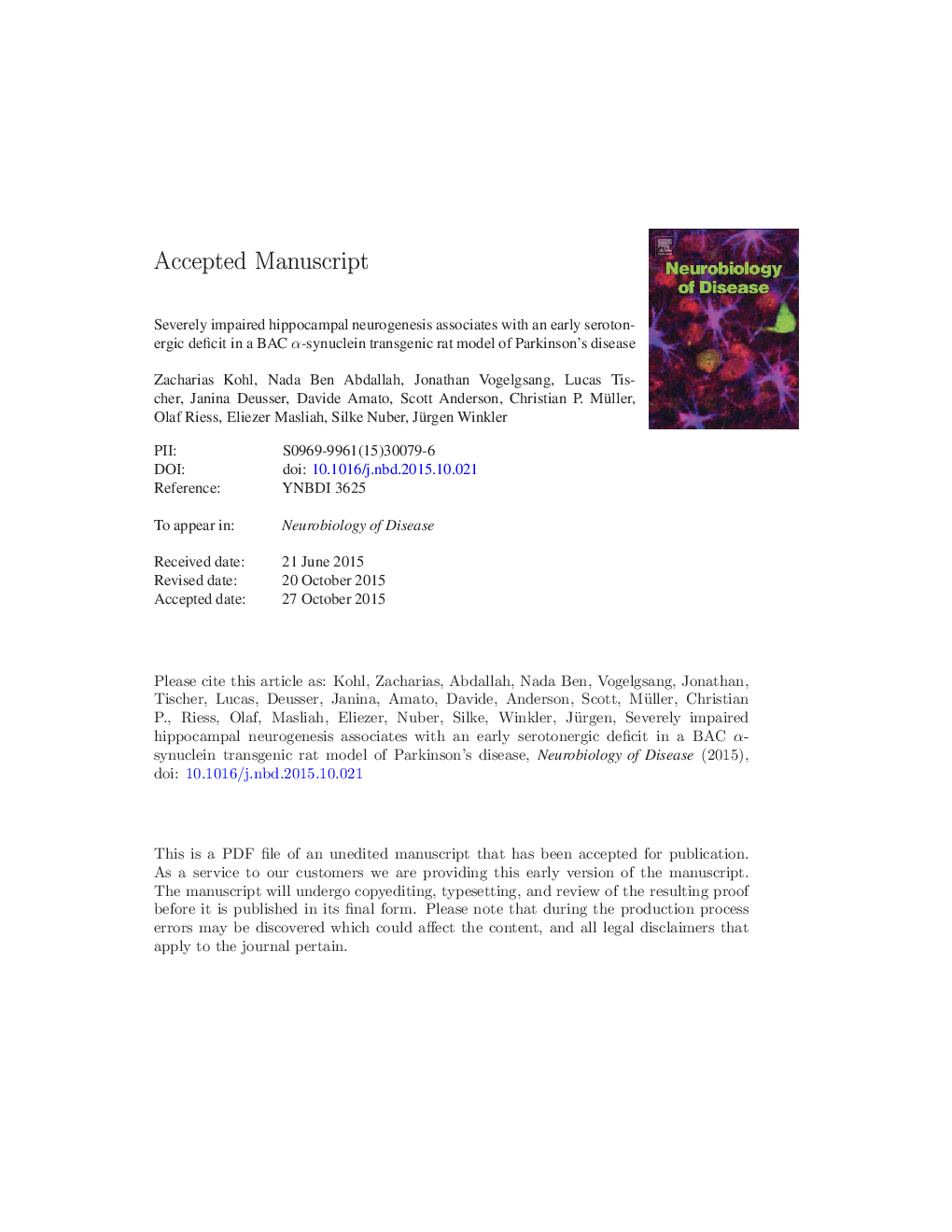| Article ID | Journal | Published Year | Pages | File Type |
|---|---|---|---|---|
| 6021539 | Neurobiology of Disease | 2016 | 32 Pages |
Abstract
Parkinson's disease (PD) is a multisystem disorder, involving several monoaminergic neurotransmitter systems resulting in a broad range of motor and non-motor symptoms. Pathological hallmarks of PD are the loss of dopaminergic neurons and the accumulation of alpha-synuclein, however also being present in the serotonergic raphe nuclei early in the disease course. The dysfunction of the serotonergic system projecting to the hippocampus may contribute to early non-motor symptoms such as anxiety and depression. The adult hippocampal dentate gyrus (DG), a unique niche of the forebrain continuously generating new neurons, may particularly present enhanced susceptibility towards accumulating alpha-synuclein levels. The underlying molecular mechanisms in the context of neuronal maturation and survival of new-born neurons are yet not well understood. To characterize the effects of overexpression of human full-length alpha-synuclein on hippocampal cellular and synaptic plasticity, we used a recently generated BAC alpha-synuclein transgenic rat model showing important features of PD such as widespread and progressive alpha-synuclein aggregation pathology, dopamine loss and age-dependent motor decline. At the age of four months, thus prior to the occurrence of the motor phenotype, we observed a profoundly impaired dendritogenesis of neuroblasts in the hippocampal DG resulting in severely reduced survival of adult new-born neurons. Diminished neurogenesis concurred with a serotonergic deficit in the hippocampus as defined by reduced levels of serotonin (5-HT) 1B receptor, decreased 5-HT neurotransmitter levels, and a loss of serotonergic nerve terminals innervating the DG/CA3 subfield, while the number of serotonergic neurons in the raphe nuclei remained unchanged. Moreover, alpha-synuclein overexpression reduced proteins involved in vesicle release, in particular synapsin-1 and Rab3 interacting molecule (RIM3), in conjunction with an altered ultrastructural architecture of hippocampal synapses. Importantly, BAC alpha-synuclein rats showed an early anxiety-like phenotype consisting of reduced exploratory behavior and feeding. Taken together, these findings imply that accumulating alpha-synuclein severely affects hippocampal neurogenesis paralleled by impaired 5-HT neurotransmission prior to the onset of aggregation pathology and overt motor deficits in this transgenic rat model of PD.
Related Topics
Life Sciences
Neuroscience
Neurology
Authors
Zacharias Kohl, Nada Ben Abdallah, Jonathan Vogelgsang, Lucas Tischer, Janina Deusser, Davide Amato, Scott Anderson, Christian P. Müller, Olaf Riess, Eliezer Masliah, Silke Nuber, Jürgen Winkler,
